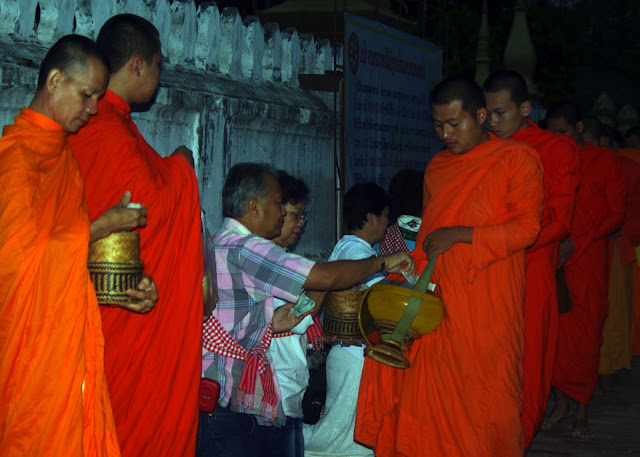After spending so much time seeing rice fields all over Asia we decided to spend a day at the Living Land Rice Farm to learn about the 13 steps to grow and harvest rice. The amount of labour to grow rice is incredible - I'll never look at rice the same way again. We all got a chance to try each step of the rice production - here are a few photos of some of the steps.
We all took our shoes off and climbed into the field to do some basic ploughing with Susan, the water buffalo. The field was incredibly sticky and it was slow going to plough the field. Most farmers use tractors now to speed up the process.
Kenna is trying her hand at ploughing...

Cole did a great job...
Chuck and I also tried it...here is Chuck doing the farmer thing. I love his hat!
We then spent some time learning about how to select good quality rice to plant. The heavier the seed the better so the farmer immerses the seeds in a pot of water, and all the seeds that sink to the bottom of the pot are used for planting. After planting each seed in a small paddy they are watered twice a day for about 3 weeks when they are then big enough to re-plant in the rest of the fields. Each seed creates 35 rice stalks (each stalk has about 200 - 300 grains of rice). We each got a chance to plant the seeds in the muddy field and then do some weeding. The rice takes about 3 months to grow and each rice field needs weeding about 1x month.
When the rice turns a golden color it is ready to be harvested by hand. Cole is holding the small scythe that is used to cut each rice stalk.

Farmers make their own tools - here is Chuck working on making a piece of r-bar into a scythe. Simple homemade bellows (on the right of the photo) are used to stoke the fire and the metal stump is used for an anvil and a shaper to create the scythe. Very simple design but it works well.

After the rice has dried for a week it is beaten to remove the rice from the stalks. The stalks are used to feed the farm animals.

Rice is carried from the fields in these baskets. The strap rests on your forehead and the basket rests on your back. Fully loaded these baskets are 30 - 40 kg!

Rice is stored in the small huts with the husks still attached. This rice can be stored for up to 2 years. When the family is ready to eat the rice the women separate the rice from the husks by tossing the rice into the air and letting the wind carry away the lighter husks. This is difficult to do - you need the right touch - I'm concentrating hard!!!!
At the end of the day we had a rice feast! Rice crepes, rice cakes, rice waffles, crispy rice bites covered with caramel (called cat pooh for their odd shape), and spicy tamarind sauce to dip them in. You can also drink rice wine (very strong) and Beer Lao, which has rice as one of its ingredients. Beer Lao is the tastiest beer in Asia and only costs $1.10 for a large bottle.
We had a great day - it was interesting and fun!























































